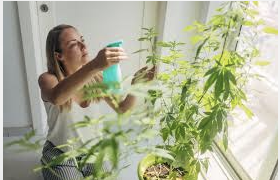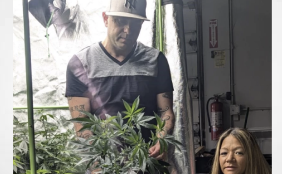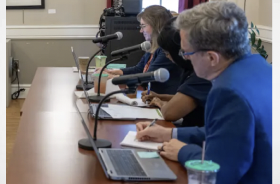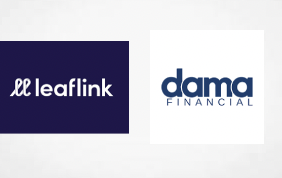We start you off with the
LETTER FROM THE ACTING ADMINISTRATOR
It is my privilege to present the 2020 National Drug Threat Assessment (NDTA), a comprehensive strategic assessment produced by the Drug Enforcement Administration’s (DEA) Intelligence Program to inform U.S. policymakers and the American public about the threat posed by drug trafficking and associated transnational organized crime in the United States. Drug trafficking imperils the safety and security of all Americans.
The criminals who engage in drug trafficking fuel the epidemic of drug abuse and addiction in our country — and profit from it — while feeding the violence that plagues many of our communities. Although we have made progress in driving down the abuse of controlled prescription opioids, the United States continues to face challenges from both new and persistent threats. Availability and use of cheap and highly potent fentanyl has increased, and methamphetamine has flooded into the United States across the southern border.
Mexican transnational criminal organizations continue to supply most of the cocaine, methamphetamine, heroin, and fentanyl smuggled into the country, while violent street gangs dominate the retail sale and distribution of these illicit drugs at the local level.
Every day, DEA works hand-in-hand with our international, federal, state, local, and tribal law enforcement partners to disrupt and dismantle the most significant drug trafficking organizations in the United States and around the world. Together, DEA and our partners are confronting these threats head on, and have redoubled our efforts to keep Americans safe through increased focus on countering opioid trafficking and enforcement initiatives such as Project Python and Operation Crystal Shield.
The results of these efforts are staggering, with more than 28,000 pounds of methamphetamine and millions of counterfeit pills containing fentanyl seized, over 2,600 targets arrested, and hundreds of firearms taken off the streets.
DEA is also committed to building partnerships with public health professionals to help turn the tide against the growing wave of overdoses that are occurring in our communities. Provisional data released by the Centers for Disease Control and Prevention in December 2020 indicated that overdose deaths continue to rise amid the global pandemic, causing unimaginable suffering and further complicating prevention, enforcement, and treatment efforts. Only by working together — law enforcement, public health officials, educators, and community advocates — can we develop and implement the innovative solutions required to overcome this public health crisis.
Respectfully, D. Christopher Evans Acting Administrator U.S. Drug Enforcement Administration
Next
EXECUTIVE SUMMARY
The trafficking and abuse of illicit drugs inflict tremendous harm upon individuals, families, and communities throughout the United States. The violence, intimidation, theft, and financial crimes carried out by transnational criminal organizations (TCOs), criminal groups, and violent gangs pose a significant threat to our nation. The criminal activities of these organizations operating in the United States extend well beyond drug trafficking and have a profoundly negative impact on the safety and security of U.S. citizens. Their involvement in alien smuggling, firearms trafficking, and public corruption, coupled with the high levels of violence that result from these criminal endeavors, poses serious homeland security threats and public safety concerns.
Mexican TCOs are the greatest drug trafficking threat to the United States; they control most of the U.S. drug market and have established varied transportation routes, have advanced communications capabilities, and hold strong affiliations with criminal groups and gangs in the United States. Illicit fentanyla —produced in foreign clandestine laboratories and trafficked into the United States in powder and pill form—is primarily responsible for fueling the ongoing opioid crisis.
Fentanyl-laced counterfeit pills continue to be trafficked across the country and remain significant contributors to the rates of overdose deaths observed across the country. As inexpensive, potent fentanyl continues to push into established heroin markets, fentanyl will augment, and in some cases supplant, white powder heroin in various domestic markets.
Methamphetamine price and purity data, as well as law enforcement reporting, all indicate methamphetamine continues to be readily available throughout the United States. Seizures along with drug poisoning deaths involving methamphetamine continue to rise—purity and potency remain high while prices remain relatively low. Availability of cocaine throughout the United States remains steady, likely based on the high levels of coca cultivation and cocaine production in the Andean Region of South America. Leading indicators of cocaine availability, including laboratory analysis of cocaine exhibits, cocaine seizure data, and price and purity of the drug, indicate that cocaine availability is steady. Controlled Prescription Drugs (CPDs)b remain a prevalent concern within the United States— availability remains constant while abuse levels decreased from the previous year. CPD diversion continues to decrease across most categories at the national level, but some states report an increase in the number of incidents.
The number of opioid dosage units available on the retail market and opioid thefts and losses reached their lowest levels in nine years. Mexico remains the most significant foreign source for marijuana in the United States; however, in U.S. markets,
Mexican marijuana has largely been supplanted by domestic-produced marijuana.
a. The term “fentanyl” will be used throughout this document to mean illicit or clandestinely produced fentanyl unless otherwise specified.
b. CPDs include, but are not limited to, opioids (e.g. Vicodin, OxyContin), depressants (e.g. Valium, Xanax), stimulants (e.g. Adderall, Ritalin), and anabolic steroids (e.g. Anadrol, Oxandrin). UNCLASSIFIED
UNCLASSIFIED 2020 NATIONAL DRUG THREAT ASSESSMENT
The demand market for New Psychoactive Substances (NPSs) is typified by new substances constantly being created and marketed to users. Synthetic cannabinoids and synthetic cathinones are the most common classes of NPSs available and abused in the United States; however, there are many other classes of NPSs including opioidsc , phenethylamines, tryptamines, benzodiazepines, and piperazines. The 2020 COVID-19 pandemic and the associated restrictions on daily travel, U.S. border closings, closure of nonessential businesses, and the broad shelter-in-place orders temporarily posed new challenges to criminal organizations and their movement of drugs throughout the United States during the first half of 2020. Global drug markets reported fluctuations in pricing, availability, transportation, and distribution of illicit drugs during the initial stages of the pandemic in the spring of 2020. Despite initial disruptions in drug smuggling, transportation, and distribution, TCOs operating throughout foreign countries and in the United States continued to test new methods and use existing techniques to continue operating during the COVID-19 pandemic.
For Cannabis View PP’s 46 -58
They have put in a great deal of detail that illustrates excatly where DEA thinking is on Cannabis
We would highlight amongst other things their push(political?) on THC & strength.
Increasing Potency
As domestic production and availability continue to rise, the THC potency of marijuana and marijuana concentrate products increases as well. Most states that have legalized marijuana have not placed limits on THC potency, with the exception of those states with cannabidiol (CBD)- only provisions.
Print and online ads routinely promote smokable marijuana at levels of 30 percent THC or more available in retail marijuana dispensaries. Some boast marijuana concentrate products with
THC levels exceeding 90 percent. High levels
of THC potency is not limited to the marijuana industry. Black market growers have also capitalized on the wide availability of plant strains with high THC content, most of which have low CBD content. Data from the University of Mississippi’s Potency Monitoring Program shows that in 2019, average THC potency in both traditional and concentrated marijuana decreased from 2018—although still at a high level (See Figure 40).
Figure 40. Average THC and CBD Potency of Traditional and Concentrated Marijuana, 1995 – 2019
Here’s the full document
DIR-008-21 2020 National Drug Threat Assessment_WEB


















